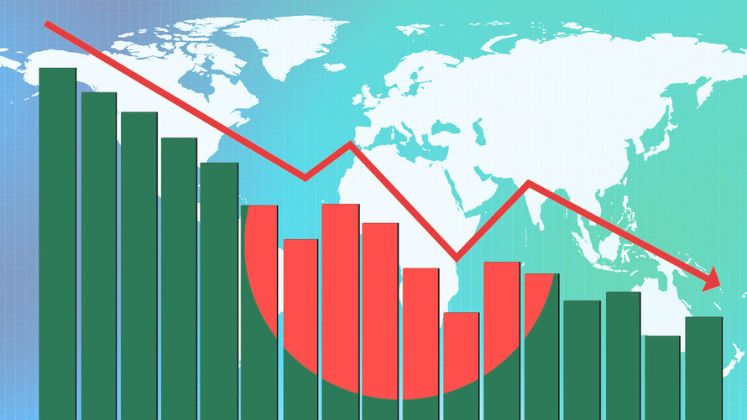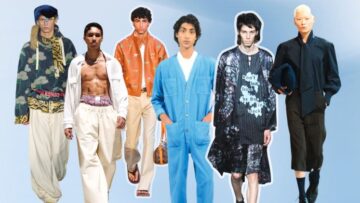The RMG industry is going through hard times. Revised data from the Export Promotion Bureau (EPB) indicates that export earnings for 2023 stood at US $ 35.88 billion, a decrease from the previously reported US $ 47.38 billion. In comparison, the exports figure in 2022 was US $ 45 billion. Similarly, data from the Office of Textiles and Apparel (OTEXA) shows that apparel shipments to the USA from January to October 2024 fell by 3.31 per cent to US $ 6.15 billion. The average price per unit has also declined, dropping to US $ 3.13 during this period from US $ 3.27 in the same timeframe last year.
As reported by Eurostat, Bangladesh’s RMG exports to EU has witnessed 0.8 per cent growth during the first 10 months (January to October) of 2024, but there is 4.92 per cent decline in terms of price.
However, there are signs of recovery. The RMG exports have seen 12.3 per cent increase in earnings during the first five months of the 2024-25 fiscal year. According to data from the BGMEA, the RMG sector generated US $ 16.1 billion in export revenue from July to November 2024.
Experts say the industry is expected to maintain the positive momentum from late 2024 into the first half of 2025, as key markets like the US and EU experience economic recovery.

“No doubt, the overall business scenario is not very upbeat but we are optimistic due to mainly two reasons – the leadership of Muhammad Yunus as his strong relations with the international community is in favour of Bangladesh, and secondly, the entrepreneurship skills of Bangladeshi RMG exporters as they have always come out strongly from all types of challenges. We have not only survived but also grown,” said Mohammad Hatem, President of the Bangladesh Knitwear Manufacturers and Exporters Association (BKMEA).
He even added that depending on the requirement, suitability, RMG exporters are constantly investing in technology, adopting cost-reduction approaches, exploring untapped markets and focusing more on product development.
Spring/Summer ’25 has been a little slow from the beginning for Bangladesh, especially during the buying period when Bangladesh was facing serious student agitations which led to major political upheaval in the country. It affected order confirmations from all the buying continents. But the industry has observed that from October onwards, there has been a spike, especially from the US and suppliers are receiving good volume orders. Europe has been a little slow and cautious about buying but the industry is hopeful that A/W ’25 will bring in better prospects for recovery.

Echoing similar sentiment, Naavneet Paul, MD, Blue Ruan Sourcing says that business is coming back and now with the end of S/S ’25 deliveries, there will be more visibility on A/W ’25 buying. Regarding future order bookings also, there is positive feedback from buyers though they are cautious in their buying, considering the difficult situation and instability, but this will be sorted soon. Blue Ruan Sourcing offers a diverse range of products characterised by premium and artisan apparel. The company focuses on the UK, Europe, US and India.
The RMG suppliers and Bangladeshi buying houses don’t see any major apprehensions from buyers as they realise the scale of Bangladesh’s capacities.
Companies specifically from the non-traditional and emerging markets are upbeat about Bangladesh and few of them are planning to increase their production base here. One of them is Russia’s Gloria Jeans (GJ). With around 700 stores in more than 300 cities, GJ is Russia’s largest vertically integrated fashion retailer offering apparel and accessories for adults and kids.

Moyeen Ahmed, GM, Bangladesh, India and Pakistan, GJ, informed that they are increasing sourcing from Bangladesh and the same will be continuing going ahead. “We are placing orders in good factories and keep accruing production space for future seasons by making ourselves an important customer for them,” he says.
There are Indian retailers, D2C brands like Baazar Retail, Brand Studio Lifestyle, Citykart, GV Mall etc., which are planning to start or increase their existing sourcing from Bangladesh as the scale and reach of these Indian companies is increasing. This can have positive impact especially on the product categories like denim, jackets, sweaters, which are Bangladesh’s strengths compared to India.
To ensure growth in the current scenario, companies are strategically working with a short-term focus. Naavneet, for example, is focusing on delivering S/S ’25 requirements on time so that customers’ faith is retained in Bangladesh production. As traditional markets like the EU and the US are not very positive, the company needs to look at newer options and explore other markets. “This overall business decrease is not a surprise to anyone. There is political instability around the world whether it is with regard to the US Election, Israel-Palestine war etc., which have made the international market a little volatile. Also due to the recent Bangladesh Government change, customers were feeling a little shaky about placing business in the market. Now this perspective has changed and new orders will come gradually to Bangladesh. The US too will go slow with China, so some business will be moving to other Asian countries, including Bangladesh,” averred Moyeen.
In 2024, before the political turmoil in Bangladesh, the industry was strongly of the view that apparel sourcing would increase from Bangladesh and this view was strengthened by the visit of senior officials from Walmart, H&M, VF Corp., Primark, Otto Group, Carrefour, C&A, Li & Fung and Kmart to the country as they reaffirmed their commitment to source more. Post turmoil and change of government in Bangladesh, none of the top brands or retailers have reduced their sourcing from Bangladesh.
While internal challenges have posed difficulties, the situation is improving and the outlook is positive. With anticipated increase in US tariffs on China, Bangladesh stands to gain additional orders from both existing and new clients.







